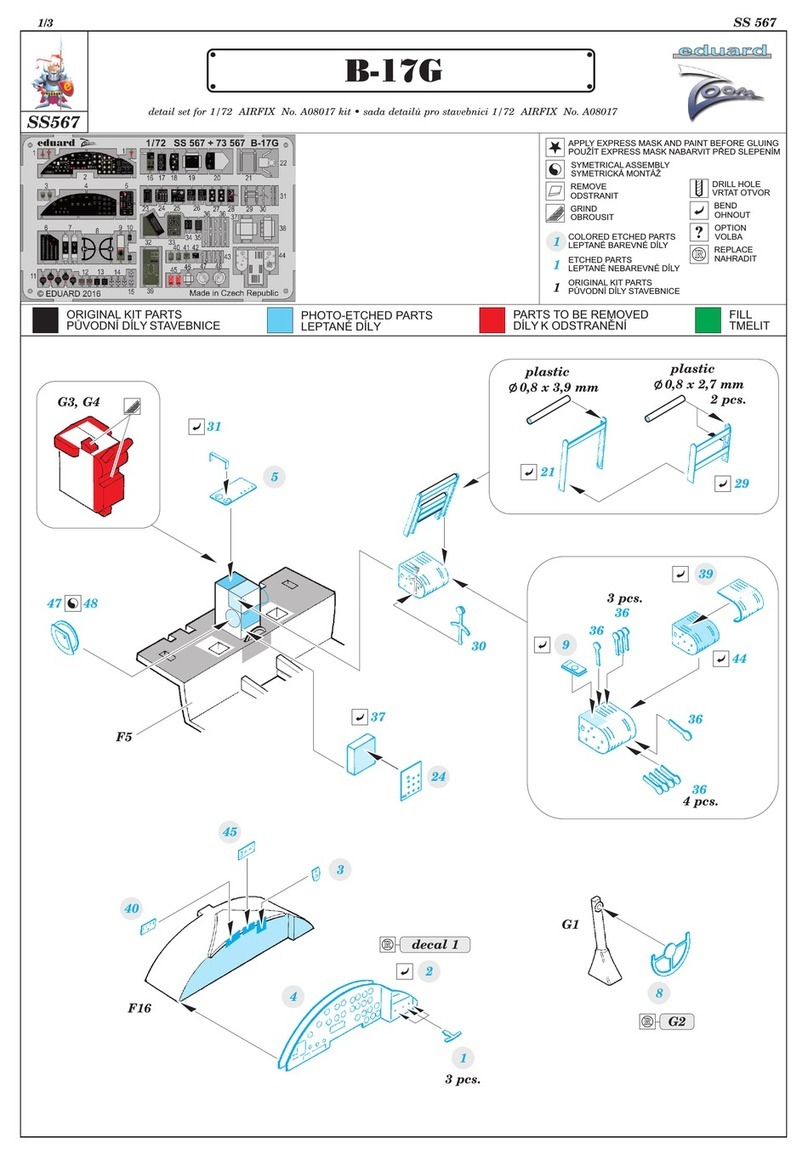Glider.it Vettore User manual

1
VETTORE
INSTRUCTION MANUAL

2
SUMMARY
Introduction, safety Information 3
Kit parts, technical data 4
Functions, servos, set up 5
Fuselage – karman opening 6 - 7
Servo base 8 - 9
Elevator 10 - 11
Rudder 12 - 15
Canopy base (cockpit) 15 - 20
Canopy gluing 21
WINGS (aileron plus flaps controls) 23 – 27
Wings locking system 28 – 29

3
INTRODUCTION
Vettore is a 4 mt. wingspan glider, for thermic, slope and mid- aerobatic
flight. It is a full composite glider made of GFK (Glass Fiber + KEVLAR) or
CFK (Carbon Fiber + KEVLAR).
SAFETY INFORMATION
Even if we perform on every model extensive quality checks, there should
be the possibility that some imperfections arise.
In this case, we kindly ask you to check all the parts before start assembling.
If a part/component presents some imperfections, we are available to
examine and replace it after checking. Do not hesitate to contact us.
Please be advise that parts already worked by the customers are excluded
by replacement.
ATTENTION!! These instructions would help you to complete the assembling
of Vettore, as per our suggestions/methods.
For servos and accessories, what we are suggesting can be obviously
replaced by other similar items from other brands/producers.
RC gliders are not toys; their assembling and use need technical knowledge
and craftsmanship.
Mistakes and negligence in building and flying may cause damage to people
and things.
We underline these facts, as we are not responsible for your assembling
work, maintenance and flight with this model.

4
KIT PARTS
2 wings (1 left – 1 right)
1 fuselage
1 elevator
1 rudder
1 wing joiner
1 canopy + cockpit
4 servo covers (ailerons + flaps)
TECHNICAL DATA
Wingspan 4000 mm
Fuselage lenght
1.963 mm
Wing area
92 dm2
Weight (OD layout, glider conf.)
5,3 Kg
Wing load 58 g/dm2
Wing profile
Mod. MH
Center of gravity 65 mm

5
Functions, servos, setup
Function (suggested) Servo Excursion
Aileron KST X10 10mm
Flaps KST X10 35 mm
Rudder KST MS589 40 mm
Tailplane KST X10 710 10 mm

6
FUSELAGE (Karman openings)
We suggest covering the fuselage (close to karman) with paper-tape to avoid
scratches and glue drops).
Wing servos connectors
Mark the connector position in each size of the fuselage
Open the hole (with Dremel blade). We use MULTIPLEX GREEN CONNECTOR
(MPX 6 pins – female)
Cut the extension cable (karman – receiver) and solder it to the MPX connector
Use the shrink tube to cover the connection
Every servo needs 3 pins; mark your scheme
Now you can glue the MPX (female) connector to the fuselage

7
We suggest UHU PLUS ENDFEST 300 (or resin + tyxotropic agent)

8
SERVO BASE
There are several methods to install the hardware inside the fuselage.
We we show you a single plywood base to install servos + receiver +
battery.
Mark a cardboard with fuselage shape (canopy zone); use it to realize the
plywood base (thickness: 5 – 6 mm)
Please consider that we also sell an optional kit of accessories that includes:
- Servo base (plywood – cnc cutted);
- Oval rib – internal fuselage (plywood – cnc cutted);
- Vetronite control horns;
- PLA (3d printed) servo base for ailerons/flaps.
Before gluing the base, test the right position of rudder servo, battery,
receiver etc.
The plywood base needs to be glued to the fuse at about 3 cm down from the
edge of the canopy (see the picture)

9
Use sand paper inside the fuse and glue the plywood base with resin +
tyxotropic (or UHU PLUS ENDFEST 300). You can reinforce with carbon
ribbon + resin.
Now you can paint the base

10
ELEVATOR
The elevator servo is installed inside the vertical rudder
Open the upper side of the rudder; make a plywood servo base and glue it
inside the rudder, as shown in the pictures

11
Final result

12
RUDDER
For the rudder control we suggest a PULL-PULL system
- Make the plywood 4-5 mm plug (as shown in the picture);
- Cut the rudder as shown in the BLU CIRCLE;
- Make two Vetronite (fiberglas or carbon) sticks and glue them in the
plywood (RED + GREEN CIRCLES);
- Hole the vetronite sticks and insert a steel bar (1,5 mm), this is the
hinge system of the rudder;
- Join the rudder to the “hinge system” using the steel bar 1,5 mm;

13
- Install the rudder moving part inside the fuselage and check (without
gluing) if the movement is correct;
- Glue the rudder hinge system as shown in the picture;

14
- Make two opposite holes in the fuselage, as shown in the picture, about
3-4 cm from the end of the vertical rudder;
- Install the steel cable inside the fuse and crimp it to the servo and to
the rudder moving part;

15
CANOPY BASE
There are several way to lock the canopy base to the fuse; we suggest two
method.
1st METHOD:
Glue a wood bar to the front side of the canopy base
Make a slot in the front side of the fuse

16
Glue (epoxi 5 min.) to the back side of the cockpit base a piece of
plywood
Glue a piece of plywood in the back side of the fuselage and make a
hole (bowden diameter)

17
Make a hole behind the karman and insert a bowden as shown in the
picture; glue it with epoxi 5 min.

18
Sharp a steel bar (same Bowden diameter) and using a drill, hole the
piece of plywood glued to the canopy base
-

19
Use a braided steel cable as a pin to close the canopy base

20
2nd METHOD:
Glue e magnet to the fuselage and a steel plate to the canopy
base
IMPORTANT: USE A VERY “STRONG” MAGNET
Table of contents
Popular Toy manuals by other brands
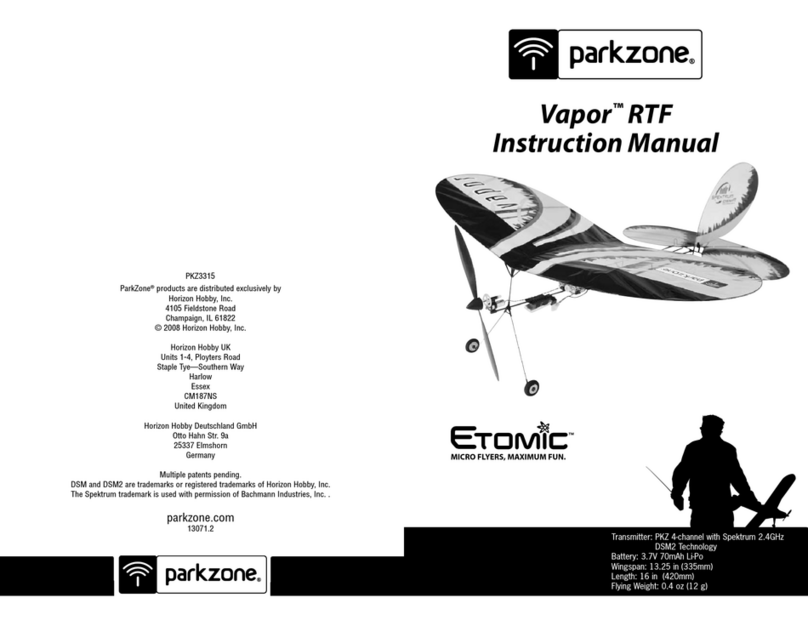
PARKZONE
PARKZONE Vapor RTF instruction manual
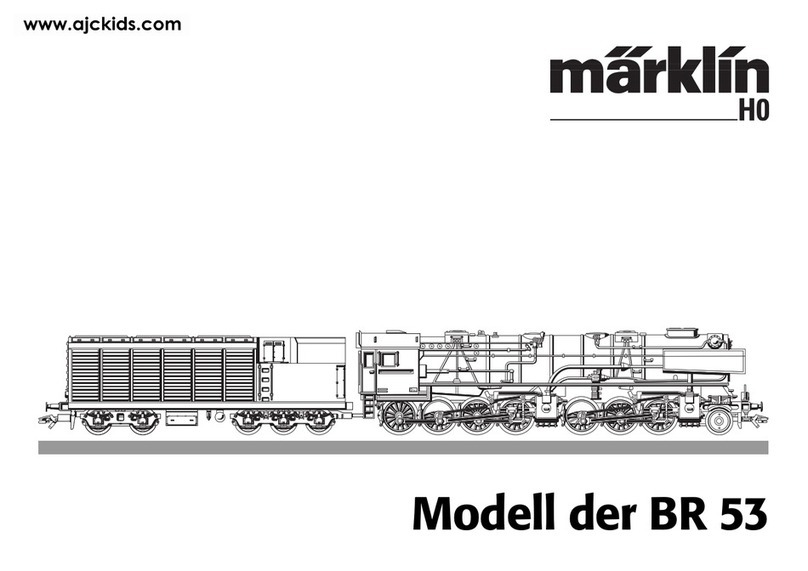
marklin
marklin BR 53 manual
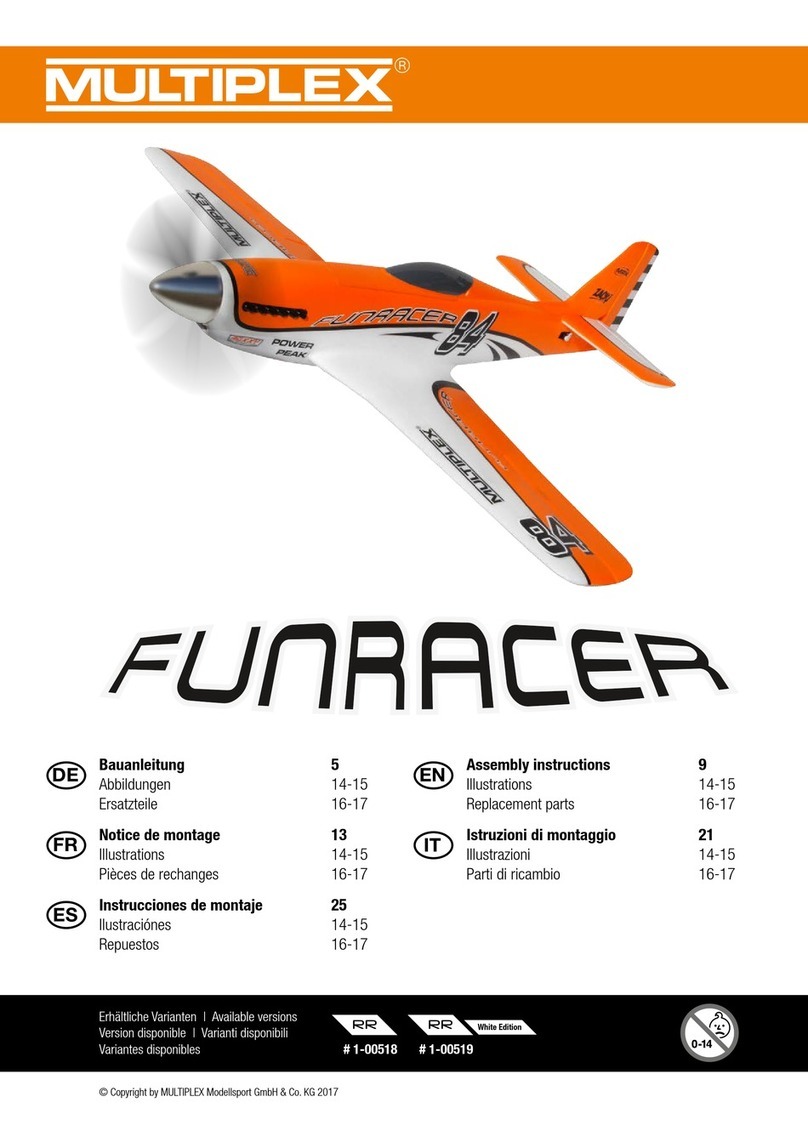
Multiplex
Multiplex Funracer Assembly instructions

Hasbro Gaming
Hasbro Gaming Disney Pixar Toy Story Space Ranger Buzz Lightyear... manual
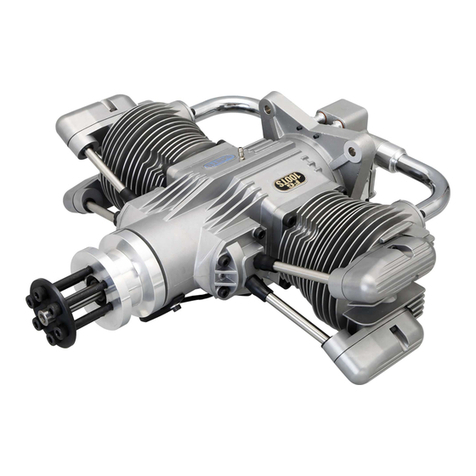
Saito
Saito FG-100TS instruction manual
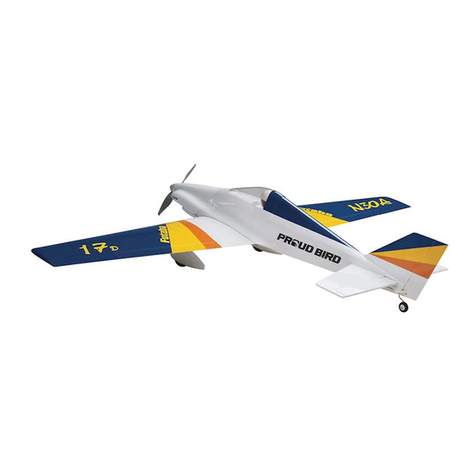
GREAT PLANES
GREAT PLANES Proud Bird instruction manual

LeapFrog
LeapFrog Leap Start instruction manual

Eduard
Eduard 49 023 instruction sheet

Fisher-Price
Fisher-Price LIFTIN' ROLL BARREL LOADER H4833 user manual

Xtrem Bots
Xtrem Bots CHARLIE the astronaut instruction manual

Timeless Wings
Timeless Wings MIG-15UTI Assembly guide

Jamara
Jamara Parkhaus Small City instructions

